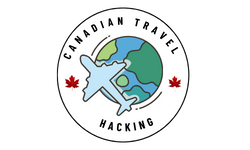Checked baggage is getting to be so expensive when you fly that it is good to know the policies and prices before you get your ticket. It can make the difference if you fly with Air Canada vs Westjet or another carrier.
Here are five ways to help save money on baggage with Air Canada:
1. Calculate Air Canada baggage fees before flight
As of July 24, 2013, when you travel on an Air Canada or Air Canada rouge flight or on an Air Canada Express flight operated by Jazz, Sky Regional, Air Georgian or Exploits Valley Air, your complimentary baggage allowance is determined by your fare, destination, date of travel and frequent flyer status.
They have a free tool where you enter your itinerary, elite status, and class of flight (economy, business, first class) and it tells you how much luggage you can bring and what the costs are for additional bags.
- Checked baggage allowance calculator for Air Canada
2. Check your elite status.
If you’re a frequent flyer within the Star Alliance check your status. If you are Star Alliance Gold, Air Canada will waive the fee for up to three checked bags starting at Gold.
3. Learn to properly pack.
Martha Stewart shares how to properly pack a suitcase.

Martha shares some great tips including techniques on hanging, layering, and overlapping. She explains that to avoid leaks caused by pressure changes during air travel, fill travel-size plastic bottles partway, squeeze out excess air, and cap them, creating a vacuum.
I always stuff my shoes with socks or anything else that will fit. If clothes wrinkle, I just hang them during a hot shower.
I like to use plenty of Ziploc bags to pack items (good idea for packing underwear all together, socks all together).
4. Carry-on everything
The easiest way to avoid baggage fees is to not to check any bags.
Air Canada has decent carry on policy:
Here are examples of items you can bring on board in addition to your carry-on allowance:
- Coat or other outer garment,
- Small purse measuring no more than 25cm x 30cm x 14cm (10in x 12in x 5.5 in). Larger purses will be included in your carry-on allowance.
- Infant care item (e.g. diaper bag),
- Stroller – collapsed diameter not to exceed 25.5 cm (10 in) and length not to exceed 92 cm (36 in),
- Child restraint device if a seat has been purchased for the child/infant,
- Special needs items (see ‘Special Items’ section below),
- Small electronic device such as cell phone or MP3 player.
- Snacks or food to eat on board:
- All food must be wrapped or in a container.
- You may not consume your own alcoholic beverages on board.
- Always purchase liquids after you’ve passed the security checkpoint.
- See guidelines for liquids.
Air Canada does have a weight and size limits on carry-on items.
[styled_box title=”Standard article” color=”black”]Maximum size:
23 cm x 40 cm x 55 cm
(9 in x 15.5 in x 21.5 in)
Wheels and handles included.
Maximum weight:
10 kg (22 lb)[/styled_box]
[styled_box title=”Personal article” color=”red”]Maximum size:
16 cm x 33 cm x 43 cm
(6 in x 13 in x 17 in)
Maximum weight:
10 kg (22 lb)[/styled_box]
5. Send your luggage with Greyhound
Shipping luggage on a Greyhound bus is a great way to transport luggage where you will be traveling to later and do not want to have to worry about carrying your own luggage. You will need to ship the luggage in advance so that it arrives at least one day before you are set to arrive.
I have personally used Greyhound to send luggage from Ontario to BC when we were travelling on parental leave last year. The cost for a very large suitcase was around $40. It worked out well as this was for our summer clothes that we used on our trip to Florida (that we did not need in Europe).
What are some tips you have to avoid paying high baggage fees on Air Canada flights?


